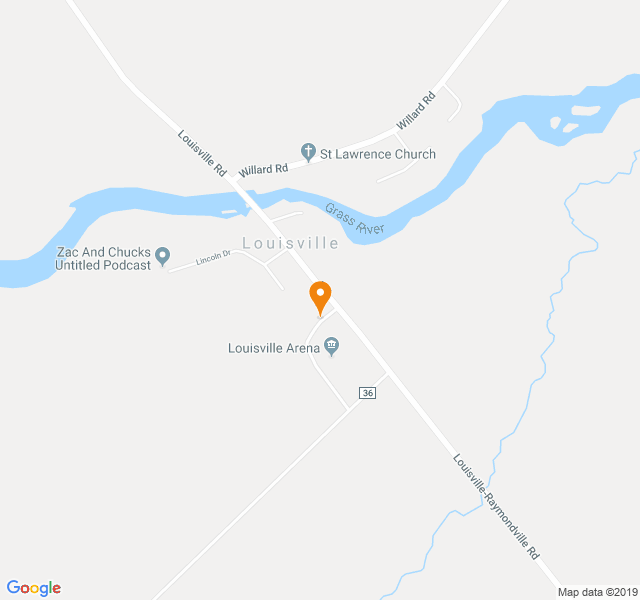Table of Content
- AARP Texas Urges Legislators to Focus on Nursing Home Safety
- Seniors Deserve Better: Ensure Quality Care in Nursing Homes
- Health & Wellness
- Surging Cases and Deaths in Nursing Homes Suggest Another Winter COVID-19 Spike
- AARP In Your State
- Action Needed Now on Long-Term Care Reform
- Nursing Home Residents Are Behind on COVID-19 Shots
A survey by AARP of registered voters age 18+ in Virginia showed overwhelming support for a variety of measures to hold nursing homes accountable. More than 7-in-10 (71%) of all voters surveyed support the establishment of minimum hourly staffing thresholds, with support consistent across genders, age groups, and regions. This proposal is supported by almost 8-in-10 (78%) moderate voters and nearly two-thirds (62%) of conservative voters. You must take action to ensure residents receive the care they need by establishing minimum hourly staffing standards. A number of states have taken steps including public reporting of nursing homes and assisted living facilities with COVID-19 cases, increased testing, more PPE, hazard pay for staff, and mobilizing the state National Guard units to support facilities. At the federal level, the Centers for Medicare & Medicaid Services is requiring nursing homes to report confirmed cases of COVID-19 among residents and staff as well as notify residents and families.
Residents must be able to exercise their rights to visitation, and facilities should be held accountable for ensuring such visits occur. It’s time we require that our nursing home residents are provided with safe environments and high-quality care. The Virginia General Assembly must take action and pass legislation to establish minimum staffing standards to ensure facilities are held accountable for providing that care. For the four-week measures, nursing homes were included only if the facility reported to CDC for all four weeks (nationally, 93% of facilities for the most recent four-week period, for states ranging from 60% to 99%). If a nursing facility reported but had missing data for a specific measure, that facility is excluded from the calculation of that measure for the dashboard. Many states have required self-reporting by nursing homes and/or other long-term care facilities, but the requirements vary widely.
AARP Texas Urges Legislators to Focus on Nursing Home Safety
The CARES Act relief bill included virtual visitation for federal prisoners, but there were no similar provisions for seniors in nursing homes or other long-term care facilities. The state fact sheets include several measures of the percentage of total state deaths and cases that occurred among nursing home residents and nursing home staff. Because the denominator data is from a different source, the reported data may result in a percentage less than 0% or greater than 100%, which is impossible. The value of each such measure is capped at 100%, and values of less than 0% are marked as NA. These measures should not be used to compute the number of cases or deaths occurring outside of nursing homes.
AARP is the nation’s largest nonprofit, nonpartisan organization dedicated to empowering Americans 50 and older to choose how they live as they age. With nearly 38 million members and offices in every state, the District of Columbia, Puerto Rico, and the U.S. Virgin Islands, AARP works to strengthen communities and advocate for what matters most to families with a focus on health security, financial stability and personal fulfillment.
Seniors Deserve Better: Ensure Quality Care in Nursing Homes
Message Body I support AARP’s fight to pass nursing home reform legislation because Virginia’s nearly 30,000 nursing home residents deserve better. It’s time for facilities to put the safety and well-being of nursing home residents first. Protect seniors by ensuring that nursing home residents are provided with safe environments and high-quality care.

At the high end, 95% of residents in South Dakota are fully vaccinated, and 70% are up to date. The rate of resident cases in the week ending December 4 is the highest since early February, during last winter’s Omicron surge. Most facilities now meet criteria for in person visitation because there are no outbreaks.
Health & Wellness
AARP is urging the Centers for Medicare & Medicaid Services to strengthen its enforcement of the quality standards put in place to protect the 1.3 million Americans who live in nursing homes. Ensure that facilities are able to provide testing and have the personal protective equipment to keep residents and employees safe. As each day passes, the devastating impact that the pandemic is having on Americans who live and work in nursing homes and other care facilities is becoming more and more clear. According to NCDHHS, case rates are down over 15-fold in skilled nursing facilities, adult care homes and other licensed facilities since the peak of transmission in January 2021.
Our leaders must act immediately to stem the loss of life due to coronavirus and improve conditions in America’s long-term care facilities. AARP will continue to shine a light on what’s happening in nursing homes so that families have the information they need to make decisions, and nursing homes and lawmakers can be held accountable. California is the leading the way in staff vaccinations, with nearly half (49%) of staff up to date on vaccinations, and two in five (39%) of facilities achieving 75% of staff up to date. While the majority of facilities in every state have at least 75% of staff vaccinated , only 1 out of every 12 facilities has reached that threshold for the percentage of staff up to date on vaccinations as of mid-November.
For example, in some cases a state might opt to defer to the federal government for penalizing a nursing home violation, because the federal penalties would be greater than the state’s. But if federal enforcement of those penalties is weakened, the health and safety of nursing home residents are jeopardized. That’s why AARP is fighting to put the safety and well-being of nursing home residents first by asking lawmakers to pass nursing home reform legislation. The first reporting date for the CMS Nursing Home COVID-19 data was May 24, 2020, and includes all cases and deaths that were reported since the beginning of the year; however, retroactive reporting is not mandatory, and the accuracy of reporting at the state level is unknown. Vaccination data were first reported for the week ending May 30, 2021, and are mandated as of the week ending June 13, 2021.
Arizona’s rates are the lowest across the board, with only 74% of residents vaccinated, 58% boosted, and 26% up to date. As of mid-November, 87% of nursing home residents were fully vaccinated and 75% had gotten at least one booster shot; however, only 45% were up to date on vaccinations with the bivalent booster. The rates of resident deaths and resident cases during the 4 weeks ending November 20 are up moderately compared to the previous 4 weeks, while staff cases are up slightly. More recently however, in the weeks ending November 27 and December 4, resident and staff cases are surging rapidly. You'll start receiving the latest news, benefits, events, and programs related to AARP's mission to empower people to choose how they live as they age. AARP said any weakening of the federal regulations would lead to situations that would have a negative effect on safety for nursing home residents.
In May 2020, the Centers for Medicare & Medicaid Services required nursing homes to self-report COVID-19 cases and deaths on at least a weekly basis; these data are reported directly from nursing homes to the federal government and are consistent across all states. As a result, there is a significant undercounting of cases and deaths before June 2020 in this data source. Ensure adequate staffing and funding levels to meet the needs of long-term care residents and appropriately recruit, train, retain, and compensate care workers.

Some states combine data for nursing homes and other long-term care facilities such as assisted living; others combine resident and staff cases and deaths, while others provide limited or no data at all. The threat of COVID-19 means nursing home residents generally can’t have in-person visitors. It’s time for full disclosure and immediate action to protect the residents of nursing homes and other long-term care facilities. Help residents stay connected with their families through video chats and phone calls.
In Congress, the ACCESS Act (S. 3517/H.R. 6487) focuses on funding and supporting virtual visitation in nursing homes. This is appalling, and a persistent lack of transparency is compounding the anxiety of family members who are unable to visit their loved ones. Until recently, there was no federal requirement for nursing homes to report coronavirus outbreaks and COVID-19 deaths, making it impossible to understand the true scope of the problem and what steps need to be taken to protect residents and staff. Find vaccination rates of both residents and staff at any Medicare-certified nursing home and compare it to state and national averages on the Medicare.gov Care Compare website. Booster rates for nursing home residents and staff, including facility level data, are available from CMS. In May 2021, CMS issued an interim final rule and guidance requiring the reporting of nursing home resident and staff vaccination status.
So that they can follow up and the Department can continue to work on measures that will enable safe visitation. And vaccinations through the federal long-term care partnership for COVID-19 vaccinations will continue this month. Beginning in June 2020, the data reported by CMS and by individual states appear to be roughly comparable, though exact comparisons are difficult because of the inconsistency in state reporting. Only 5 states and the District of Columbia have even one third of staff up to date on vaccinations and more than one in ten facilities with 75% of staff up to date.
Ensure access to in-person visitation following federal and state guidelines for safety and require continued access to virtual visitation for all residents. Prioritize regular and ongoing testing and adequate personal protective equipment for residents and staff—as well as inspectors and any visitors. Require daily reporting of facilities with confirmed cases to help manage the public health response and keep families up-to-date. RALEIGH -- The NC Department of Health and Human Services announced some good news for people who have been waiting patiently, as well as painfully, to visit their loved ones in long-term care facilities. Hold long-term care facilities accountable when they fail to provide adequate care to residents. Improve transparency focused on daily, public reporting of cases and deaths in facilities; communication with families about discharges and transfers; and accountability for state and federal funding that goes to facilities.

No comments:
Post a Comment